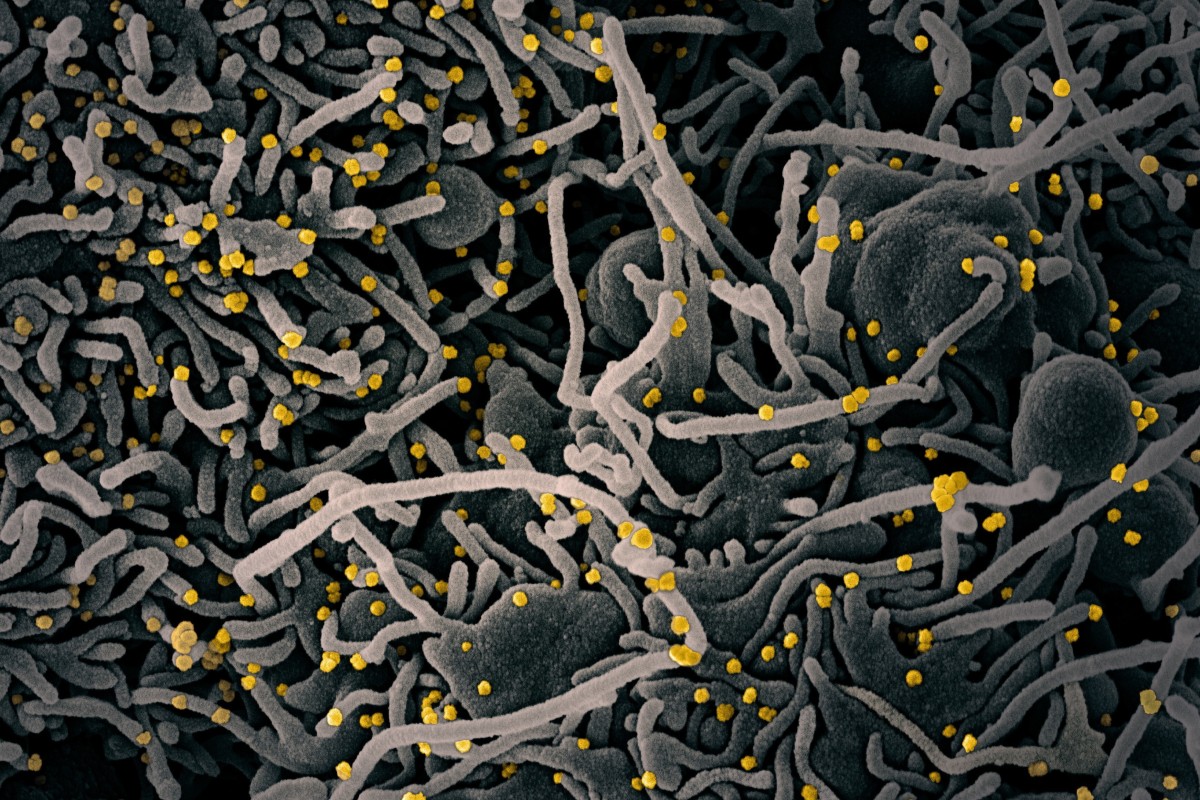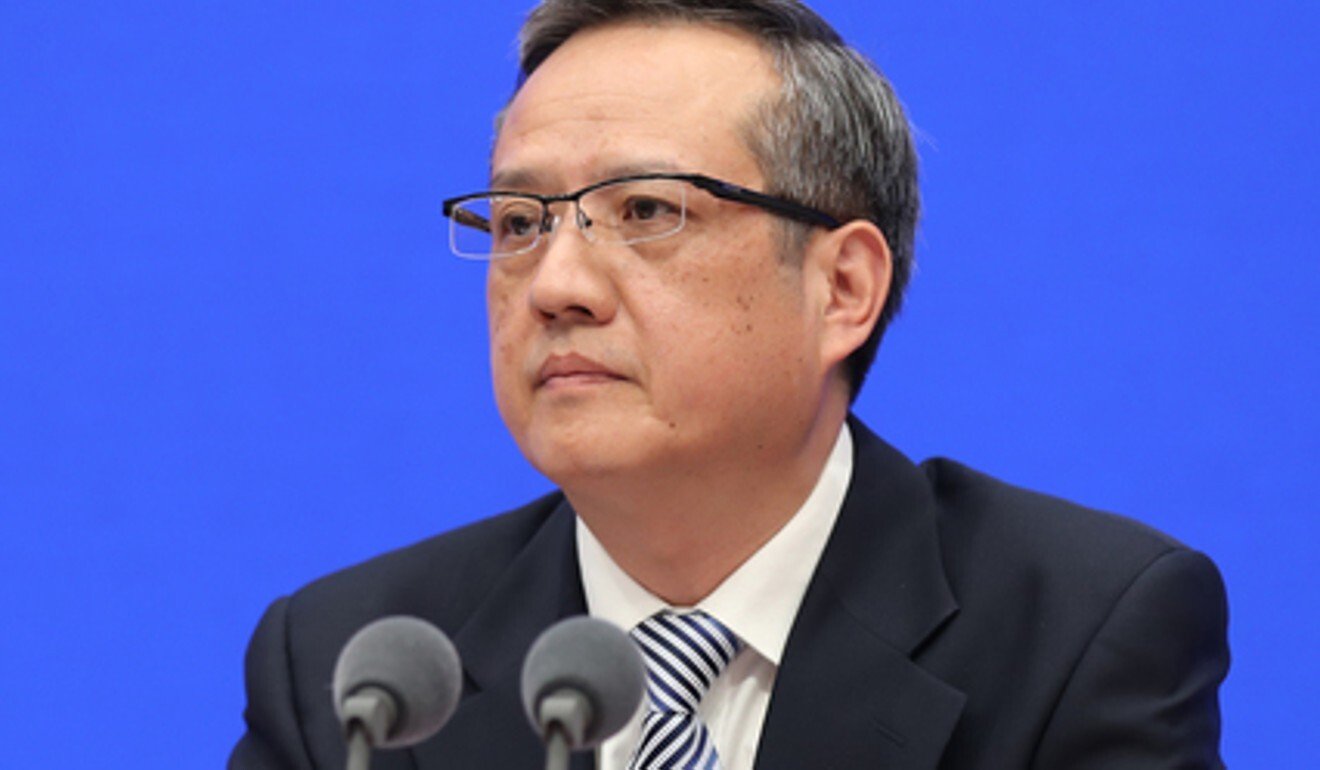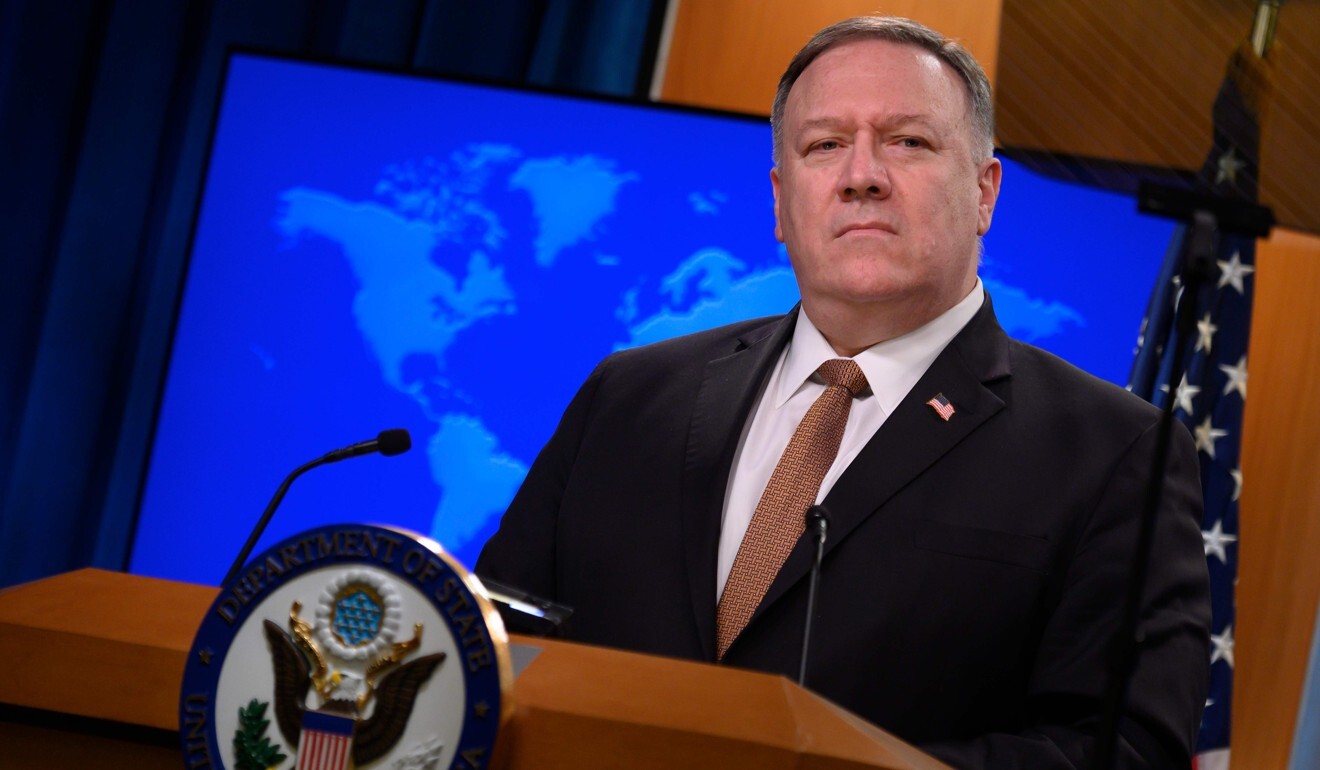China confirms unauthorised labs were told to destroy early coronavirus samples
- National health authority says this was done for biosafety reasons and to ‘prevent secondary disasters caused by unidentified pathogens’
- US Secretary of State Mike Pompeo has said Beijing declined to provide samples and destroyed them at the start of the outbreak
 A
scanning electron micrograph shows a cell with coronavirus particles in
yellow. China has confirmed that some early samples were destroyed.
Photo: EPA-EFE
A
scanning electron micrograph shows a cell with coronavirus particles in
yellow. China has confirmed that some early samples were destroyed.
Photo: EPA-EFE
China on Friday confirmed it had ordered unauthorised laboratories to destroy samples of
in the early stage of the outbreak, but said it was done for biosafety reasons.
US Secretary of State Mike Pompeo has repeatedly said that Beijing
declined to provide virus samples taken from patients when the contagion
began in China late last year, and that Chinese authorities had
destroyed early samples.
Liu Dengfeng, an official with the National Health Commission’s science
and education department, said this was done at unauthorised labs to
“prevent the risk to laboratory biological safety and prevent secondary
disasters caused by unidentified pathogens”.
“The remarks made by some US officials were taken out of context and intended to confuse,” he said at a briefing in Beijing.

Liu Dengfeng, an official with the National Health Commission, said
comments by some US officials “were taken out of context and intended to
confuse”. Photo: Handout
When the pneumonia-like illness was first reported in Wuhan,
“national-level professional institutes” were working to identify the
pathogen that was causing it, Liu said.
“Based on comprehensive research and expert opinion, we decided to
temporarily manage the pathogen causing the pneumonia as Class II –
highly pathogenic – and imposed biosafety requirements on sample
collection, transport and experimental activities, as well as destroying
the samples,” he said.
Liu added that this was in line with China’s standard practice for
handling highly pathogenic samples, which should not be done by labs
that do not meet the requirements.
Class II pathogens can be transmitted among humans or animals, or
between humans and animals, and cause serious diseases such as severe
acute respiratory syndrome (Sars) and smallpox.
Tensions have escalated between Beijing and Washington as they trade
accusations over the origin of the virus, which has killed more than
300,000 people worldwide, and China is under mounting international
pressure to allow an inquiry into its handling of the pandemic.
According to a provincial health commission notice issued in February,
those handling virus samples were ordered not to provide them to any
institutions or labs without approval. Unauthorised labs that obtained
samples in the early stage of the outbreak had to destroy them or send
them to a municipal centre for disease control and prevention for
storage.
Chinese magazine Caixin reported
in February that some hospitals had sent samples to private gene
sequencing companies to identify the mystery virus early in the
outbreak. Some of those results came back as early as December 27 and
were identified as being from the same coronavirus family as Sars, the
report said. One company had been told to destroy all virus samples,
according to the report.
The National Health Commission started investigating the virus on
December 31 and informed the World Health Organisation of the outbreak
the same day. On January 3, it ruled out that the virus was a known
pathogen causing respiratory disease, and on January 9, it said the
illness was caused by a novel coronavirus. It was later named
Sars-CoV-2, and the disease it causes Covid-19.

US Secretary of State Mike Pompeo has said Beijing withheld early virus samples. Photo: AFP
Both US President Donald Trump and Pompeo have accused China of
cover-ups and missteps at the start of the outbreak, and Pompeo has said
Beijing withheld early samples that could have been used to develop a
vaccine.
On Friday, Liu said China had shared viral strains of influenza in the
past and was open to sharing samples of Sars-CoV-2 “in an orderly manner
within the framework of the World Health Organisation” to “further
strengthen international cooperation and scientific research, promote
the development, production and fair distribution of Covid-19 vaccines,
diagnostic tools and therapeutic drugs”.
The health commission also rejected claims by US officials that China
denied a request by the WHO to visit the high-security Wuhan Institute
of Virology, which is at the centre of conspiracy theories that the
virus was engineered or escaped from the lab.
Li Mingzhu, a senior official with the health commission’s international
cooperation department, said the WHO did not make any request to visit
the lab during two trips to Wuhan, in January and February.
“The WHO has never made a request to visit a certain laboratory, so the
statement that the WHO was denied a visit to the Wuhan laboratory is
untrue,” Li said.
This article appeared in the South China Morning Post print edition as: Early viral cells were ‘destroyed for safety reasons’


